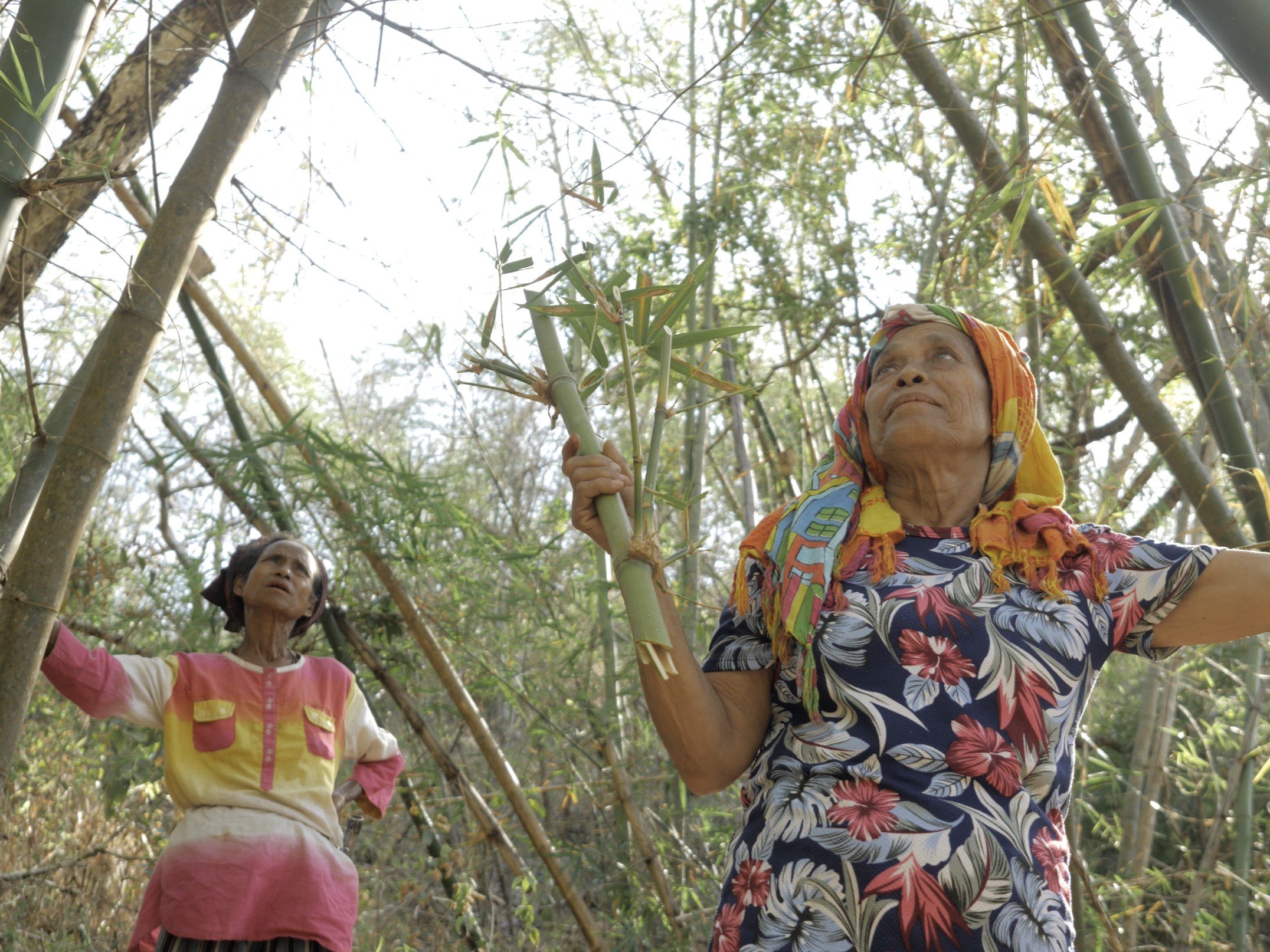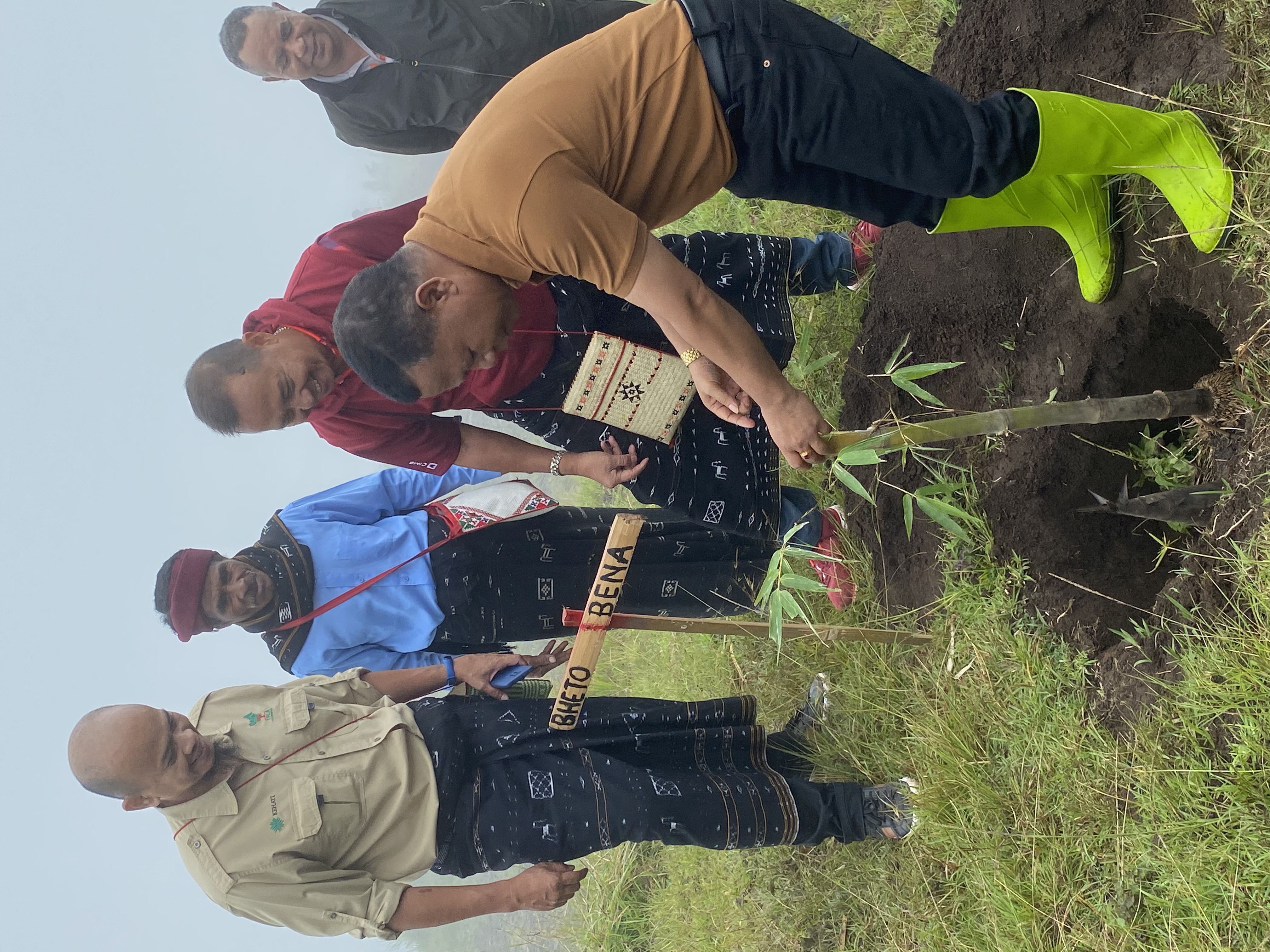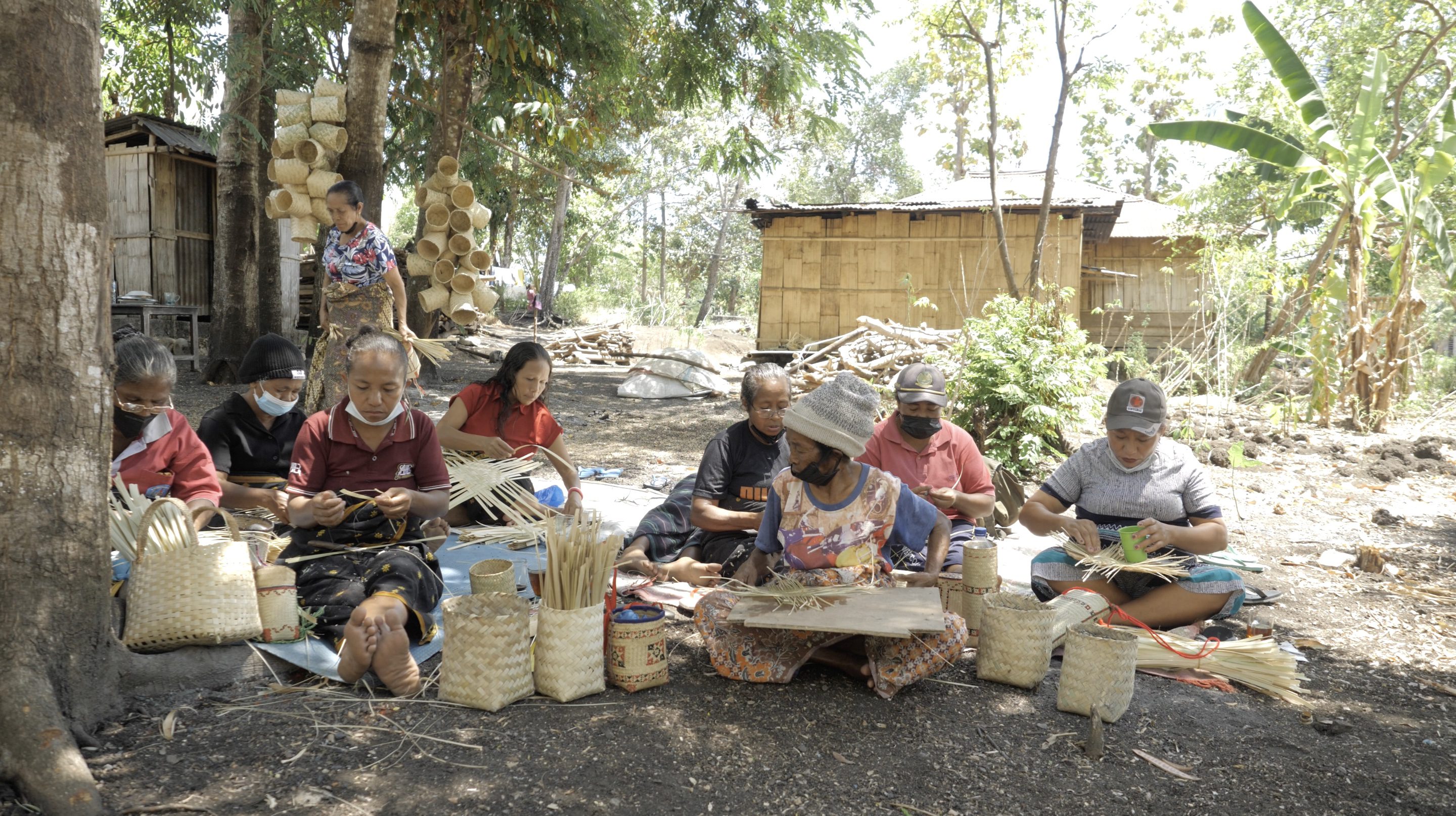Ngada Flores’ Bamboo Village for Ecological and Economic Resilience

Perempuan menjadi penggerak pelestarian bambu di Ngada Flores Nusa Tenggara Timur
-
Date:
13 Mar 2023 -
Author:
WIT Indonesia
There are hundreds of hectares of degraded, deforested land predominately made up of bushes in the Ngada District of Flores, East Nusa Tenggara. The key factor affecting this critical land is the climate. Yet, no efforts have been made to manage this important land using bamboo, a local hereditary plant. Bamboo is typically only grown along the margins of villages as a means of establishing territorial boundaries, a supply of building materials for traditional homes, or simply as a kind of firewood.
Indeed, from an ecological standpoint, bamboo that has been growing for decades in Ngada is capable of soaking up as much as 2500 to 5000 liters of water during the rainy season. In addition to preventing landslides, bamboo also conserves water.

Penanaman bibit bambu
Yayasan Bambu Lestari (YBL) has a program called Desa Bambu (Bamboo Village) that aims to address these important areas with a community-based bamboo cultivation strategy. The community now understands the significance of bamboo for their life in terms of both ecology and economy thanks to YBL’s involvement in the Bamboo Village program in 2018, which was supported by KEHATI and CIMB Niaga.
Society Role.
Local residents are involved through indigenous groups. The critical land area is now 712 hectares, 389 hectares of which belong to the customary village and the rest is privately owned.
“Aside from that, it’s planted on both sides of the river as a landslide barrier,” said Alfred, a Bamboo Village participant.
Bamboo is planted in monoculture as a landslide barrier, according to Alfred (not side by side with other types of plants). Bamboo is intercropped with other plant species on degraded land (agroforestry systems).
Harvesting bamboo takes 7–10 years. Agroforestry plants are utilized to offer financial advantages while bamboo is being grown. Bamboo supports society in this way on both an ecological and financial level.
Three Pillars of Bamboo Village
Desa Bambu dibangun melalui tiga pilar yaitu Hulu, Tengah, dan Hilir.
Upstream, Middle, and Downstream are the three pillars upon which Bamboo Village is built.
In order to cooperatively develop the village by adding bamboo as a commodity, groups must first be formed and organized as part of the upstream pillar process.
The process of seeding, or planting in key ecological places, is the middle pillar (springs, river banks, critical land).
The downstream pillar is a collection of cooperatively oriented business units, or BUMDES, that operates as a community enterprise based on bamboo. Hence, it is important to make sure that bamboo harvesting takes sustainability and sustainability into account; this is the sustainable bamboo forest idea (known as HBL: Hutan Bambu Lestari).
To avoid damaging the clumps, harvesting at the downstream pillars must be selective, not merely cutting but also starting from the elder ones. To help determine which bamboo poles should be chopped down first, each pole is tagged with the year in which it can be cut.
Government Role
The village chief provides assistance by facilitating the mentorship process. There is a lot of support at the district level, and the District Head of Ngada has signed an MOU to cultivate bamboo, which is part of the development strategy.
The KEHATI Foundation provided the information that was used to build the nursery to planting strategies used at the provincial level over the past two years.

Bambu menjadi materi kerajinan tangan yang bisa menambah penghasilan warga Ngada
In 2021, the NTT Province Government and YBL constructed the Bamboo Campus in the Turetogo neighborhood of Ratogesa Village, Golewa District, and Ngada Regency. According to YBL’s Program Head, Nurul Firmansyah, this campus is a sort of bamboo-built commerce hub.
As a firsthand demonstration of the bamboo product, Nurul added, “There is one example of a laminated house there”.
As a substitute for wood as a building material, laminate is bamboo that has undergone processing to give it a shape and durability that mimic wood. Almost all conventional building materials can be used with laminated bamboo.
With a curriculum spanning many facets of bamboo agroforestry growth from upstream, middle, and downstream, the Turetogo Bamboo Campus serves as an educational facility.
The Bamboo Campus involved 388 locals from 21 villages spread across 7 districts in Flores. More than 2.5 million seedlings were successfully planted and cared for in 2021, enough to restore 72 000 hectares of vital land.
A Bamboo Production House (known as RPB: Rumah produksi Bambu) in Labuhan Bajo will be constructed in the middle of 2023 by YBL and the Ministry of Cooperatives utilizing a model of a production cooperative. Breeders and harvesters of HBL (Sustainable Bamboo Forest) will be required to join the cooperative.
In addition to being laminated and woven, RPB products will also include bamboo bicycles, furniture, flooring, plastic-replacement packaging, and building supplies for residences, hotels, and restaurants.
